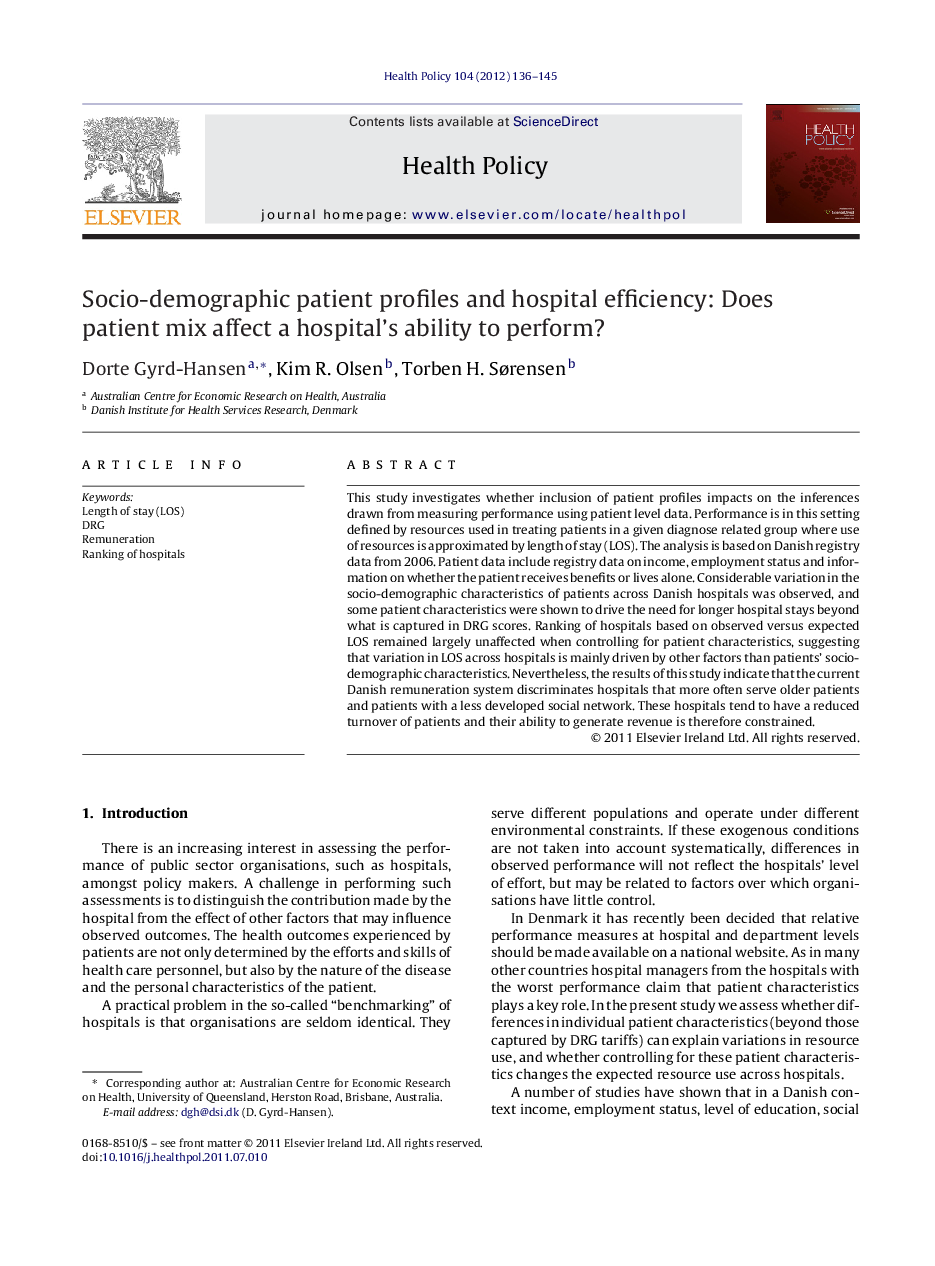| Article ID | Journal | Published Year | Pages | File Type |
|---|---|---|---|---|
| 6240091 | Health Policy | 2012 | 10 Pages |
This study investigates whether inclusion of patient profiles impacts on the inferences drawn from measuring performance using patient level data. Performance is in this setting defined by resources used in treating patients in a given diagnose related group where use of resources is approximated by length of stay (LOS). The analysis is based on Danish registry data from 2006. Patient data include registry data on income, employment status and information on whether the patient receives benefits or lives alone. Considerable variation in the socio-demographic characteristics of patients across Danish hospitals was observed, and some patient characteristics were shown to drive the need for longer hospital stays beyond what is captured in DRG scores. Ranking of hospitals based on observed versus expected LOS remained largely unaffected when controlling for patient characteristics, suggesting that variation in LOS across hospitals is mainly driven by other factors than patients' socio-demographic characteristics. Nevertheless, the results of this study indicate that the current Danish remuneration system discriminates hospitals that more often serve older patients and patients with a less developed social network. These hospitals tend to have a reduced turnover of patients and their ability to generate revenue is therefore constrained.
